Dehydrating Food in Creative Ways
Dehydrating foods has been done forever but more recently, molecular gastronomy chefs have been using the dehydration technique in very creative ways. Even better, dehydrating machines have become very efficient and affordable for around $50 in the US making it a no brainer in every well equipped kitchen.
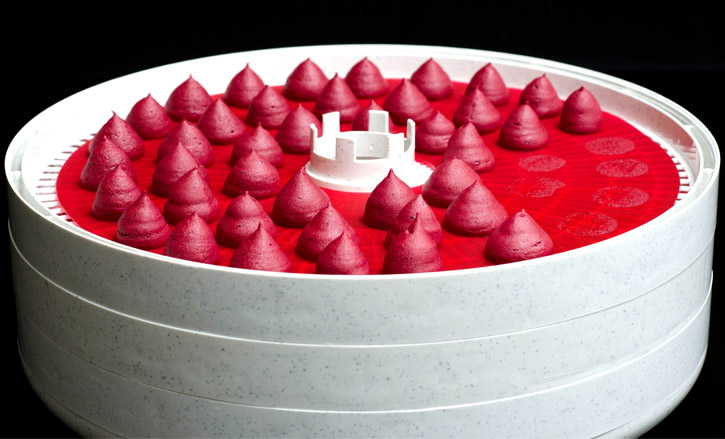
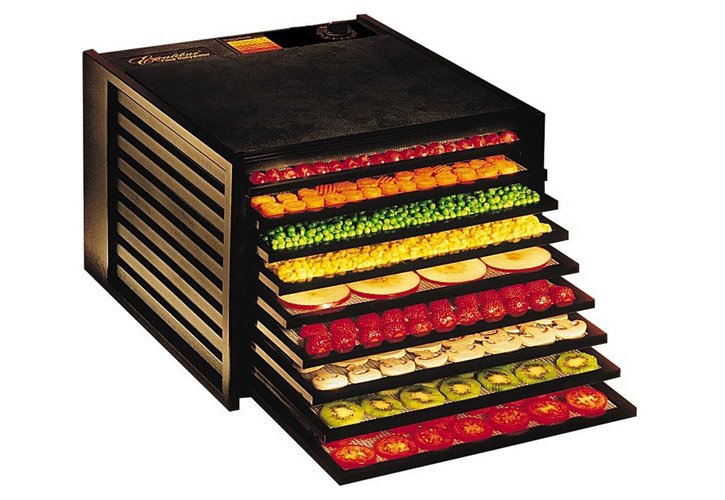
Creative Applications of a Dehydrator
Crunchy Sheets or Croquanter Technique
Crunchy sheets is a technique developed by molecular gastronomy Chef Ferran Adria to create a variety of shapes of crispy sheets of ingredients such as fruit, vegetable and yogurt with the addition of caster sugar, isomalt and/or glucose. The crunchy sheets are made at relatively low temperatures (under 80 °C) to preserve the delicate aromas of the main ingredient and a dehydrator is used to obtain the crunchy texture. See “Mango Croquant” recipe. More about the Croquanter Technique here.
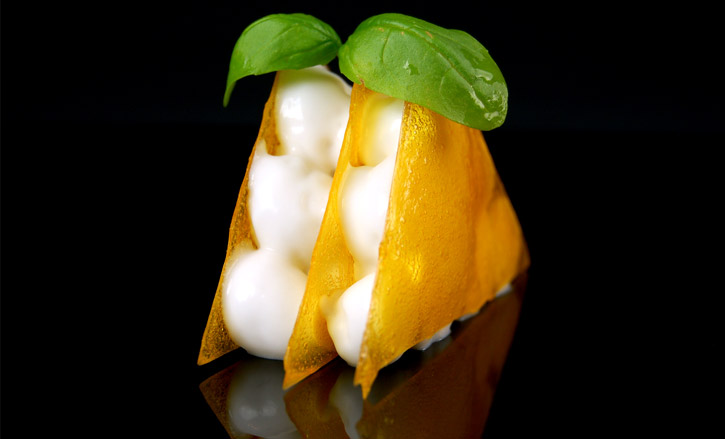
Herb Dust
Herb dust is done by dehydrating fresh herbs and then grinding them with a spice or coffee grinder. See “Banana with Parsley Dust” recipe.
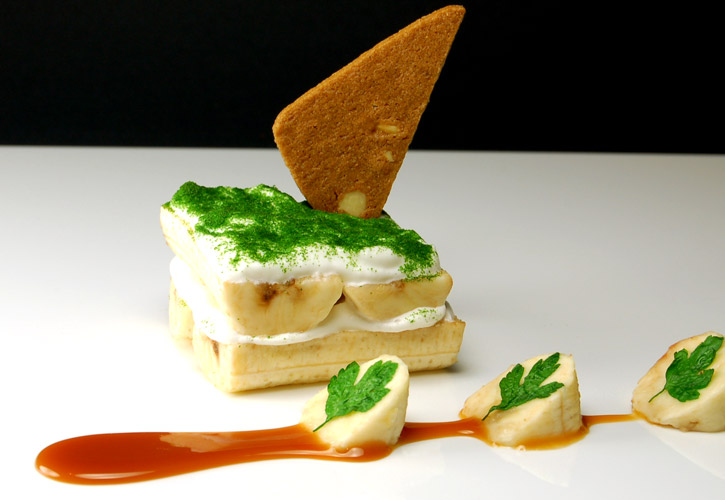
Edible Dirt
A technique used by molecular gastronomy Chefs such as René Redzepi of two-michelin star restaurant Noma. Rene’s edible dirt is made from dried malt and beer. In our “Dried-olive Soil, Goat Cheese Foam and Radishes” recipe, it is made with dried black olives. A great way to present the edible dirt is in small terra-cotta pots.
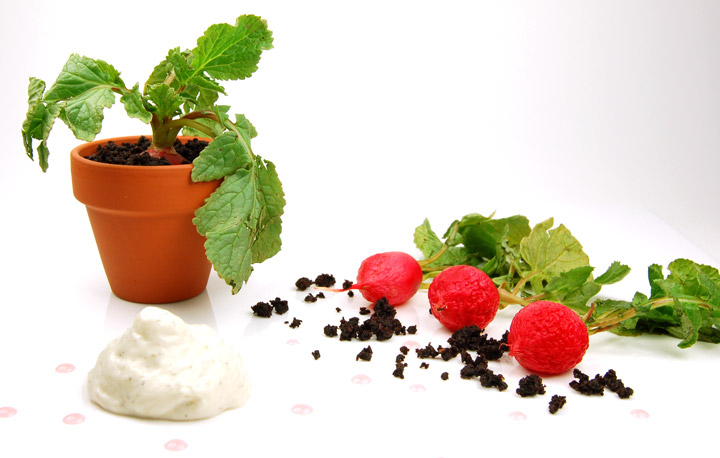
Crispy Foam
Made by spreading a thin layer of foam made with Methylcellulose and dehydrating it until it becomes crispy. The result is a very light meringue sheet.
Glass
A very thin, translucent and crispy film that resembles a thin glass. The glass technique consists of mixing a very light syrup with starch, forming a thin film over acetate sheets and letting it dry overnight before finally drying it in a dehydrator for a few hours. See Sweet Corn Glass Chips with Tomato Foam and Olive Oil Chip recipes.
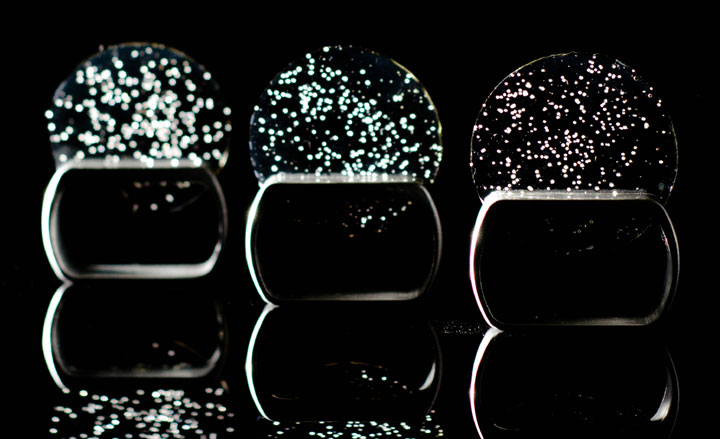
Dried Puffs or Meringue
Usually a foam made of any liquid (vegetable juice, tea, fruit juice, etc) with the addition of some Methylcellulose and Xanthan gum. The result is a very light and crunchy meringue. See “Spicy Cinnamon Puff Filled with Foie Gras” recipe.
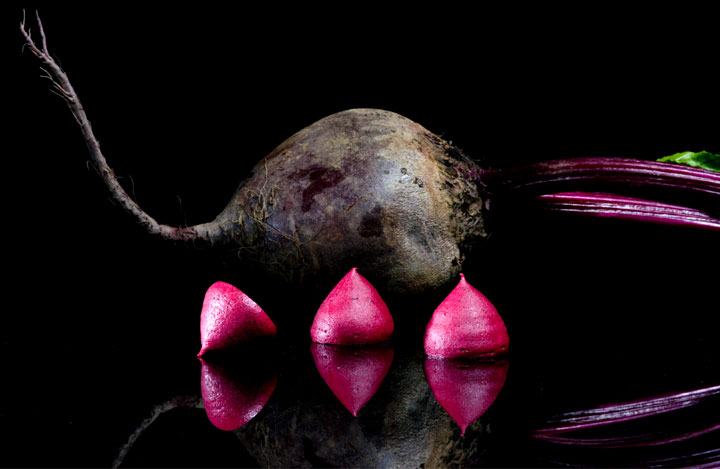
Crystals from liquids
You can create crystals from liquids with a dehydrator and the incredible ultra-thin edible film introduced into the modernist kitchen by Chef Ferran Adria. The end result is an ultra-thin, crispy and translucent tuile infused with the flavoring liquid. The process is very simple and you can make paper cocktails and soy sauce crystals for example.
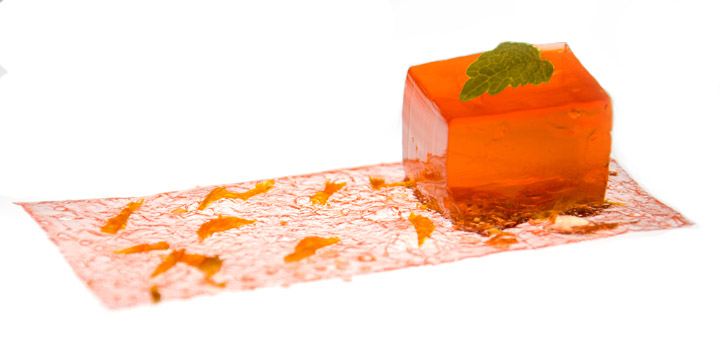
Crispy Bacon or Prosciutto Chips
Crispy bacon sheets can be made by dehydrating a thin slice of bacon in the dehydrator until it becomes crispy. The Prosciutto chips are slightly more elaborated. Several slices of Prosciutto are placed on top of each other and rolled tightly. After freezing the roll, thin round slices are cut using a meat slicer. These delicate prosciutto circles are then dehydrated until they become crispy.
Traditional Applications of a Dehydrator
More traditional applications of a dehydrator are to preserve food for camping, cooking or just snacking.
- Dried fruits are a delicious and nutritious snack
- If you buy fresh herbs and don’t use them all, you can dehydrate them when they are fresh to create your own dried herbs.
- You can make the best and healthiest jerky you’ve ever tried.
- Dried vegetables are a great snack or can be reconstituted into soups or stews.
Drying Food in the Oven
Drying food in an oven is one option for dehydration, but only if your oven will maintain temperatures of less than 200 °F. You’ll need to leave the oven door open a few inches by placing a folded kitchen towel in the door. This allows moisture to escape, air to circulate and maintain a low temperature. However, this is not energy efficient, it could be dangerous if you have children or if you need to leave your home. Dehydrators are so affordable, fast and have so many useful applications that it is probably worth buying one. We have some of the most popular dehydrator models in our store.





